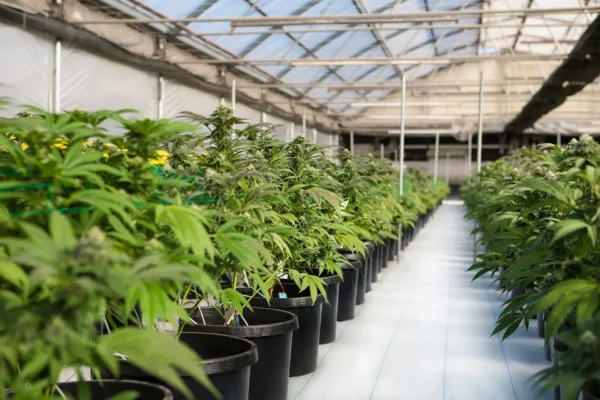Since medical cannabis was legalised in the UK on the 1st of November 2018, three cannabis-based medicinal products (CBMPs) have been licensed for use. Furthermore, unlicensed CBMPs can be initiated by doctors on the General Medical Council’s (GMC’s) specialist register in agreement with a multidisciplinary team. To be prescribed these medications, patients must have previously trialled at least two alternative licensed therapies for their condition. While access to medical cannabis via such arrangements is on the rise, clinicians and politicians continue to stress the importance of high-quality clinical evidence to support their use. Meanwhile, there remains a paucity of high-quality randomised controlled trials in this setting.
This paucity is, in part, due to the limitations of studying CBMPs that are currently in place in many parts of the world. Furthermore, the complex nature of cannabis – a plant that contains over 400 chemical compounds with medical potential – makes it difficult to assess these products with the preferred “gold-standard” approach of randomised placebo-controlled clinical trials. Nonetheless, there is a growing body of pre-clinical and clinical evidence evaluating medical cannabis.
The UK Medical Cannabis Registry (UKMCR)
Assessment of the impact of CBMPs on health-related quality of life (HRQoL) has been identified by medical cannabis patients as being a key research priority. Data from the UK Medical Cannabis Registry (UMMCR) was developed to evaluate the outcomes in patients prescribed CBMPs with chronic physical and mental health conditions.
Design and Methods of the Study
A recent study aimed to examine this data to better understand the associated changes in HRQoL, opioid prescription, and adverse events in patients treated exclusively with a homogenous selection of CBMPs enrolled in the UKMCR. The secondary aim of the study was to evaluate the impact of method of administration on the changes in HRQoL, opioid prescription, and incidence of adverse events.
Patient data was extracted on January 9th, 2023; patients who had incomplete baseline patient-reported outcome measures (PROMs) or had been enrolled for fewer than 12 months were excluded. Patients were separated into three cohorts based on how prescribed CBMPs were administered: patients only prescribed oil-based products (including reformulated oils in lozenges or capsules) for sublingual or oral administration, inhaled dried flower, and patients prescribed a combination of both.
At the first appointment, clinicians recorded patient data including demographics, medications, comorbidities, occupations and drug and alcohol history. CBMP prescriptions at the end of the follow-up period were recorded, including formulation, and CBD and THC doses (mg/24 h).
PROMs were completed electronically at baseline, and at 1, 3, 6, and 12 months after initiation of CBMPs. The PROMs collected during this study were the General Anxiety Disorder (GAD-7), Single-Item Sleep Quality Scale (SQS), EQ-5D-5L, and Patient Global Impression of Change (PGIC) questionnaires, in addition to PROMs specific to each patient’s respective conditions.
Results of the Study
A total of 1,378 patients were included in the final analysis.
A total of 32 indications were reported in the analysis. For the primary indication, chronic non-cancer pain (n = 394; 28.59%), neuropathic pain (n = 136; 9.87%), fibromyalgia (n = 162; 11.76%), and anxiety (n = 120, 8.71%) were the most common reasons for enrolment in the UK Medical Cannabis Registry.
Patient-Reported Outcome Measures
Overall, patients reported changes in self-reported anxiety, sleep quality, HRQoL, and opioid prescriptions after CBMPs were initiated. The magnitude of the improvements was static following the changes seen at 1 month, with no statistically significant differences in each primary outcome noted between each follow-up on post hoc analysis, except in comparison to baseline.
Patients prescribed dried flower were more likely to show statistically significant changes in GAD-7, SQS, and EQ-5D-5L index value. Specifically, changes in anxiety symptoms were seen in all patients, with approximately one-third (29.46%) experiencing clinically significant changes at 12 months. Furthermore, changes in HRQoL were observed across all administration routes, as demonstrated by the EQ-5D-5L index value.
Adverse events were reported by 297 (21.55%) of patients. Most of these were moderate (43.24%) or mild (42.59%), with the most common being fatigue (n = 271; 19.67%), somnolence (n = 250; 18.14%), dry mouth (n = 246; 17.85%), lethargy (n = 221; 16.04%), and headache (n = 205; 14.88%). Patients who were not consuming cannabis at baseline were more likely to experience adverse events.
Conclusions
The authors acknowledge several limitations to the present study. Crucially, it is not possible to determine whether CBMPs were responsible for the observed changes. Furthermore, a large proportion of participants were currently consuming or had previously consumed cannabis at baseline.
Nonetheless, the results of this study indicate that treatment with CBMPs was associated with changes in self-reported anxiety, sleep quality, and HRQoL. Finally, the authors conclude by recommending that future studies with active comparators “should investigate the effect of CBMPs on HRQoL, account for confounders, and assess long-term safety.”



